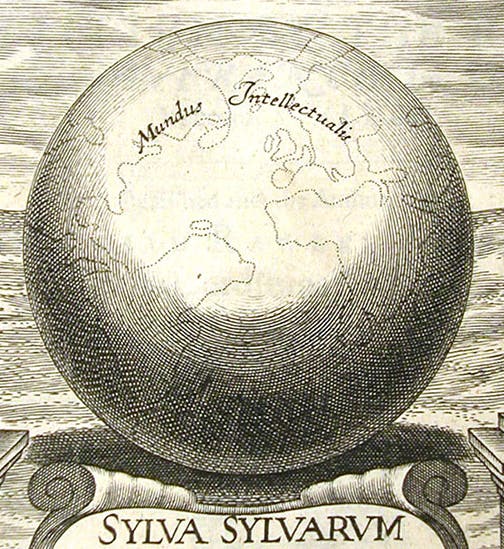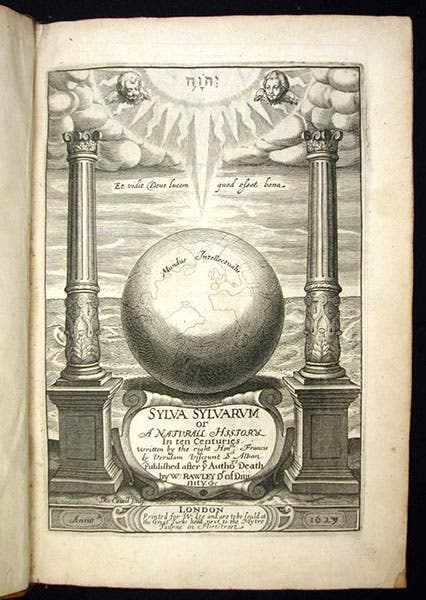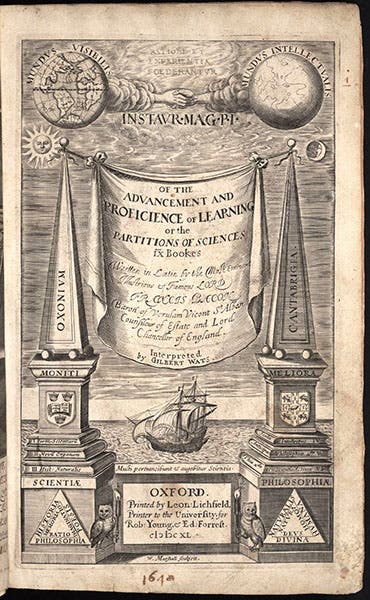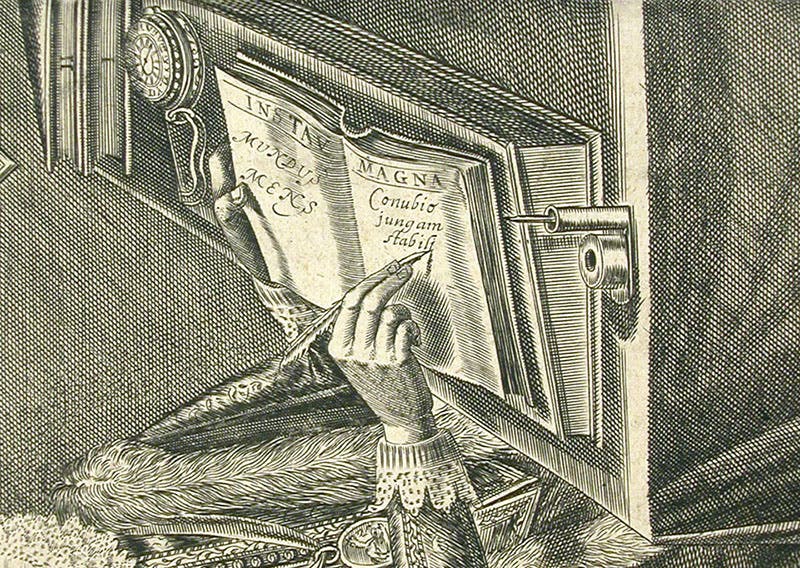Scientist of the Day - Francis Bacon
Francis Bacon, natural philosopher, essayist, and Lord Chancellor of England, was born Jan. 22, 1561, in London. Bacon is well known for advocating a break with ancient scientific methods and calling for a new experimental approach, what we now call an inductive method, where facts are collected and experiments are designed and conducted first, with hypotheses of explanation appropriate only after when all the facts are in and the experiments performed. This was set down initially in his Advancement of Learning (1605), and then in his Novum organum (1620), two works that are included among our Bacon holdings here in the Library. Bacon had a habit of writing aphoristically, using catchy metaphors to make his point, such as his use of the “pillars of Hercules” (the straits of Gibraltar) to represent the ancient limits to knowledge, which the modern investigator can and must sail right through. We discussed this aspect of Bacon’s work in a post 6 years ago, in which we reproduced three of the engraved title pages to his books, where he gave visual form to such conceits as the pillars of Hercules.
At the very end of that first post, we introduced a second conceit, the “intelligible world,” which Bacon invented to complement the pillars of Hercules, and I thought we might pursue this further today. The intelligible world first appeared in the Novum organum (where it is sometimes called the intelligible globe), but it only acquired visual form on the engraved title page of his Sylva sylvarum, a posthumous publication of 1626 (we have the second printing of 1628). We showed this engraving in our original post, but since it is a focal point today, we reproduce it again here (third image). The idea is that there are two worlds to explore out there, the material world, and the world of the mind. The material globe has been an object of interest since Columbus, but the intelligible globe has not. The pillars of Hercules for the intelligible globe (Aristotle and other ancient natural philosophers) have hardly been breached, and we need to change that, if we are to going to discover new realms with our mind.
You will note (especially in the detail, first image), that Bacon represented the intelligible globe with faint and fuzzy continental outlines, so that we can distinguish it from the material globe. In the engraving that introduced the posthumous 1640 edition of his works, called Of the Advancement and Proficience of Learning, he carried the conceit further (fourth image). At the top (see detail, fifth image), he showed the material globe on the left and the intelligible globe on the right, and they are reaching out to one another and clasping hands, “ratione et experientia foederantur” – “reason and experience are joined together” – an appropriate aphorism (and visual conceit) for the new Baconian inductive method.
There is an engraved portrait of Bacon opposite the engraved title page of the 1640 work, and we see a cropped version here (second image; you can see the entire engraving, with a lengthy inscription beneath, in our 2018 post). Bacon is writing something in the portrait, but you must greatly enlarge the engraving and rotate it 90 degrees to see what that is. I have done that for you (sixth image). The two opened pages have the heading “INSTAU MAGNA” (Instauratio magna, the collective title Bacon used for his various books). On the left page, it says MUNDUS / MENS – World / Mind – while on the right, he has written “Conubio jungam stabili” – “I will join in lasting wedlock,” a quotation from Virgil’s Aeneid. We gather that Bacon is trying to make the point, as many ways as he can, that we need to give the same emphasis to enlarging and investigating the world of the mind as we have, for the past two centuries, to exploring the physical world.
Incidentally (or perhaps not), the Sylva sylvarum, which provided the first image (and our first image) of the intelligible globe, also contains deep inside, unannounced on the title page, the New Atlantis, Bacon’s utopian work that features a society led by a scientific organization, Salomon’s House, at its political core. Salomon’s House, and its possible influence on the founding of the later Royal Society of London, will be the subject of our next Baconian post.
William B. Ashworth, Jr., Consultant for the History of Science, Linda Hall Library and Associate Professor emeritus, Department of History, University of Missouri-Kansas City. Comments or corrections are welcome; please direct to ashworthw@umkc.edu.












